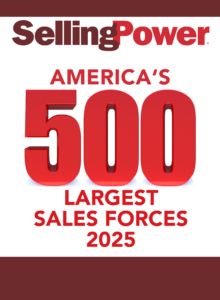How to Use “Sales Enablement” to Increase Selling Time
With the economy in distress, sales productivity is (obviously) more important than ever before. For the past year, boosting sales productivity has been the key issue faced by most companies and, with the current state of the economy, sales productivity and efficiency will only become more important to sales and marketing executives and the executive teams running large companies.
According to the market research firm IDC, companies should be paying close attention to "sales enablement," which IDC defines as "the broad set of activities that prepare members of the sales team (including channel partners) for success in sales engagements." Apparently, many companies are only beginning to look closely at these activities, particularly where they involve new technology. According to IDC’s research, even when CRM is installed, sales professionals spend a great deal of time in activities that are not customer focused. For example, the average sales professional spends:
- 26 percent of his or her week on purely administrative tasks
- 2.3 hours a week searching for marketing collateral
- 5.8 hours a week searching for customer-related information
- 6.4 hours a week creating presentations
Overall, sales professionals spend a third of their potential selling time in sales preparation activities that could be done better by automated systems and improved processes. IDC believes that better "sales enablement" processes will have a profound impact on sales productivity. IDC found that "time to revenue" drops from months to weeks for organizations that have moved to what it calls "third generation" sales enablement environments.
IDC’s "third generation" of sales enablement technology is apparently the same set of capabilities that other research organizations are calling "Sales 2.0." At the SellingPower Sales 2.0 conference in San Francisco last November, SellingPower publisher, Gerhard Gschwandtner, defined Sales 2.0 as a set of technologically-empowered capabilities:
| Prospecting |
|
|---|---|
| Interacting |
|
| Tracking |
|
| Closing |
|
| Relationships |
|
| Collaboration |
|
These kinds of activities differ from traditional CRM, which all too often merely added to the sales rep’s clerical workload. Using Sales 2.0 technology to accelerate the different elements of the sales process is a very different approach, because it "enables" the sales process to take place more quickly and smoothly.
IDC further notes that with more attention to enablement, sales people feel empowered, they perform better, and customer satisfaction increases. "IDC research further suggests that shifting as little as 10 minutes a week from this unproductive time to productive selling time is worth $57,000 per year in increased revenues for an enterprise sales professional," according to IDC analyst Lee Levitt.
Get our Enewsletter
Get the latest sales leadership insight, strategies, and best practices delivered weekly to your inbox.
Sign up NOW →Popular Articles
- How Sales Leaders Can Use OKRs to Drive Consistent Performance
- Thriving in Turbulence: How Smarter Sales Strategies Can Stabilize Your Business
- Turning Conversations into Conversions: How to Drive More Sales from In-Person Events
- Turning Quiet Periods into Opportunities: Smart Strategies for Small Business Success
